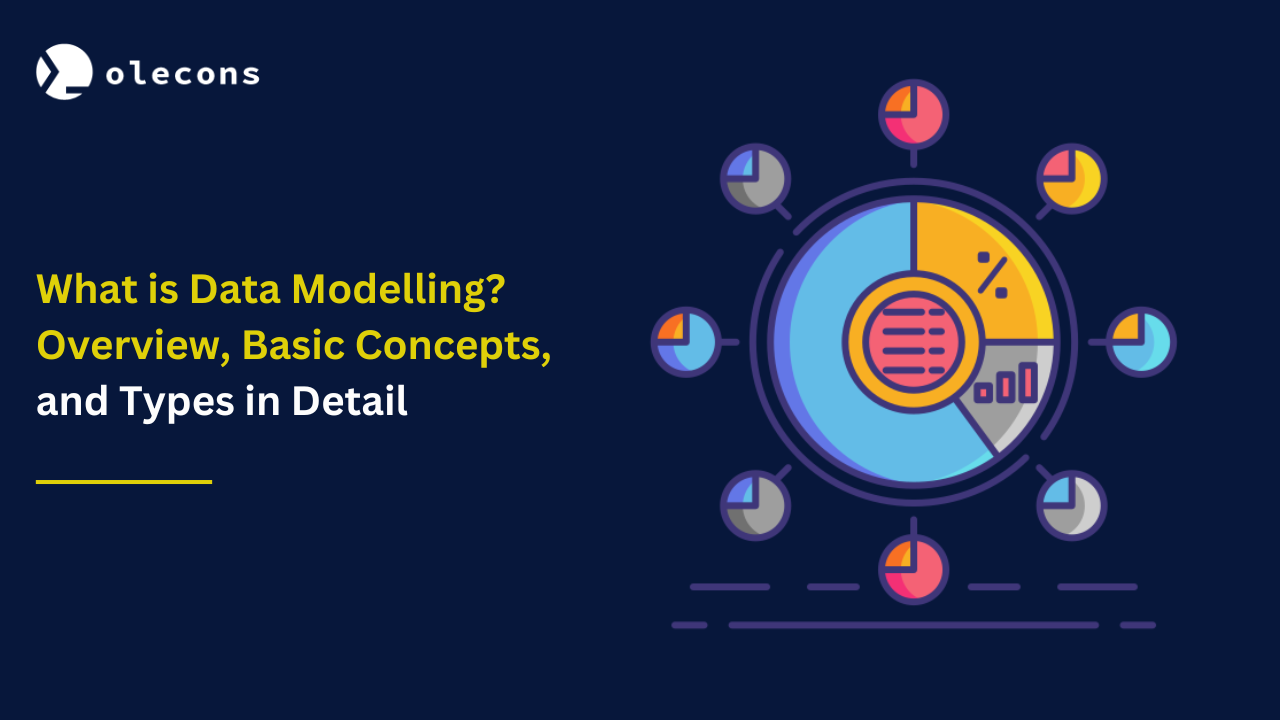
Diving into Data Modeling: Insights from Olecons, Your Tech Partner in Indore
- admin
- January 4, 2024
- 10:51 am
Hey there! We’re Olecons, right from the heart of Indore, where we breathe life into software solutions. Now, let’s chat about something that’s a big deal in our tech world – data modeling. Imagine it as the art of organizing chaos in the digital universe. It’s not just about cold hard data; it’s about making sense of this data so you can make smarter decisions. Stick around, and let’s unravel this puzzle together.
Table of Contents
What is Data Modeling?
Think of data modeling like building a LEGO set. You’ve got all these different bricks (your data), and you need a plan (the model) to figure out how they fit together to build something awesome (your database). It’s this cool process where we map out where everything goes, so it makes sense and works smoothly. It’s a big deal for us software folks because it helps us keep things neat and efficient.
Overview of Data Modeling
So, what’s the big picture with data modeling? It’s all about understanding your data and putting it in the right place. It’s like a game plan for managing your data – knowing where each piece of information lives and how it connects to everything else. This is super important for creating databases that aren’t just jumbles of numbers and text but are well-organized systems that make life easier.
Basic Concepts of Data Modeling
Here’s the fun part – the building blocks of data modeling:
Entities
These are the main characters in our story, like ‘Student’ in a school database.
Relationships:
How these characters relate to each other. Does our student attend a class? That’s a relationship.
Attributes:
These are the details about our characters. What’s the student’s name? What class are they attending?
Schemas:
This is the big picture, the overall design of our database story.
Types of Data Models
Data models come in different flavors:
Conceptual Model:
This is like the rough sketch of a painting – it shows the basic idea without all the details.
Logical Model :
Now we’re adding more details to our sketch, like what data goes where.
Physical Model:
This is the final painting, with every tiny detail added in, showing exactly how data is stored and connected.
Conclusion
And there you have it! Data modeling is a bit like storytelling – it’s about arranging the chapters (data) in a way that makes the story (database) flow. Here at Olecons, we’re all about spinning these stories in the most efficient and innovative ways. We’re not just creating software; we’re crafting tales of data in Indore. Thanks for hanging out with us – let’s create something amazing together!
FAQs
The primary purpose of data modeling is to define and organize data structures that represent information and relationships within a system. It acts as a blueprint for effective database design, ensuring that data is stored, accessed, and managed in a way that meets the requirements of the business.
Normalization is a crucial step in the data modeling process because it eliminates redundancy and dependency issues within the database. By organizing data in a way that minimizes duplication and ensures data integrity, normalization enhances overall efficiency and reliability of the database.
Normalization is essential because it eliminates data redundancy and dependency issues, promoting data integrity. By organizing data efficiently, it ensures that the database operates optimally and is resilient to potential issues.
Certainly! Data modeling tools, like Entity-Relationship Diagrams (ERD), UML Class Diagrams, and Data Flow Diagrams (DFD), provide visual representations that aid in understanding, designing, and communicating complex data structures. These tools enhance collaboration among stakeholders, streamline the database design process, and contribute to the creation of robust and well-organized databases.


